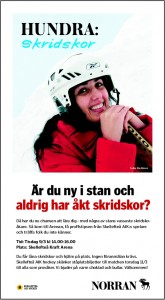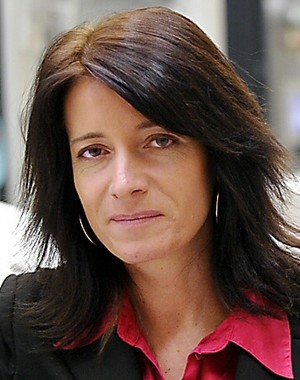Novak is scheduled to speak at the 18th World Editors Forum in Vienna (12-15 October) about how to build a community around your newspaper.
WAN-IFRA: Today lots of people read the news in a different context: online, on their phones, on tablets. What does this mean for newspaper editors who want to build a community around their papers?
NOVAK: I personally believe that we will not be able to completely defend our position as information channels in the long run, knowing how much information giants like Google and Facebook have already collected from our readership. We must start building another type of relationship with our community and we have decided that if there’s one position that none of the giants will ever take it’s the ‘girl-next-door’, the friendship, the nice neighbour. We changed our vision in 2009; the old one was that we should always be first with the latest news from the local scene. Now it says that Norran connects people and ideas and together we strengthen the region.
WAN-IFRA: ‘Building a community around a newspaper’. Does this mean encouraging readers to communicate with each other as well as with the paper?
NOVAK: Absolutely. We want people to find each other, to find opportunities, to create together. In a crowd-sourcing era, in an era when the consumer and the individual have more power than ever before, that not only means giving them things to talk about but actually facilitating them to find these things themselves.
 An ad featuring Suha Hazboun, a Christian Palestinian, one of many participants in Norran's integration drive, in co-operation with the local elite ice hockey team.WAN-IFRA: What are the top three ways that newspapers benefit from interaction with their readers?
An ad featuring Suha Hazboun, a Christian Palestinian, one of many participants in Norran's integration drive, in co-operation with the local elite ice hockey team.WAN-IFRA: What are the top three ways that newspapers benefit from interaction with their readers?
NOVAK: It’s difficult to prioritise like that! I would say the relationship, of course. If you don’t constantly talk to someone then you don’t build a relationship. In the old days we used to sit here guessing what our readers wanted. We don’t have to guess anymore, we can talk to them and ask them.
It’s a ‘quality-heightner’. If you have a community of maybe 100,000 people, you listen to them and you take in all their knowledge and experiences, of course this will make coverage better.
It’s more fun also! We’re living in a live era when people want interactivity. And this is live. This is talking to the newsroom when it’s happening.
WAN-IFRA: At Norran, how has the newsroom live chat actually affected the way journalists work?
NOVAK: You have to change your time priorities. You have to have the social media platforms live in front of you all the time and you have to follow the flows and the feeds. And that takes time. But you gain somewhere else, for example when it comes to looking for case studies. We always want a human touch to add life to a story that is theoretical or difficult to explain. Newsrooms spend a lot of time looking for these people. When you use social media the way we do now it is easy to get suggestions. Social media is a very efficient journalistic tool, but of course, it demands flexibility.
WAN-IFRA: What sort of news generates the most responses from readers?
NOVAK: City planning, for instance. We had a project called the Future City in which we took all the maps indicating the city council’s planned projects, breaking them down block by block so readers could see what the council wanted to change ‘on my block’. We got an enormous reaction from that, and city hall was actually very pleased to get this kind of input from the tax payers.
We feel that this is very good for democracy. It’s back to our basics, why we exist. Citizens should have a say in their future and their city, and we can do critical investigations into city hall and city council. But even better is to say, ‘look, this is what they’re planning. What do you think about it?’ and actually give them a voice when it’s still possible to do something about it.
WAN-IFRA: As more and more people read news online it would be easy to think that journalism is becoming more global and regional publications are in danger. In your experience, is that the case?
NOVAK: It’s a multifaceted question. We’re absolutely becoming more global because people are more willing to move all over the place so they have friends and family everywhere. But I don’t believe that you can say generally that a regional media house has a problem. It depends on how that media house acts. I think only so much mediocre reporting will be accepted in the future. You can’t say ‘we can’t cover this really well, but we’ll do a little bit’. Because there will always be niche digital products popping up that will do even better on the local level.
WAN-IFRA: In previous talks you’ve emphasised the idea that ‘transparency is the new objectivity’. What does that mean in practice?
NOVAK: We want this region to do well and we want to be the motor in that development. And this is a step away from the more classical definition of journalism where a journalist should be neutral, objective, in order to keep credibility. I believe in this new era of digitalisation where all information sooner or later will be public and everybody knows that they can work parallel with us. As a representative of a local media house I would say that most local media houses have a bias for the region. So I say, let’s be honest about it. That is today’s credibility. Objectivity is dead, and the honesty - the transparancy - of saying how things are is the new way of saving credibility.
WAN-IFRA: Is it possible for a newspaper to be too interactive?
NOVAK: There could be a difficulty if you exclude the people who cannot be interactive. For instance, in our community almost half of the population are not online during the day. They work in healthcare or schools or the mining industry or forestry and they’re not sitting in front of a screen. That means that if I say I’m only going to hear stories interactively that means I’m excluding half of the population. And that would be a democracy problem. This restructuring era is not either/or, it’s both. Always keeping an eye on the fact that you don’t have to do only this or only that. Now or never. The future is multifaceted -- and a constantly moving target.





